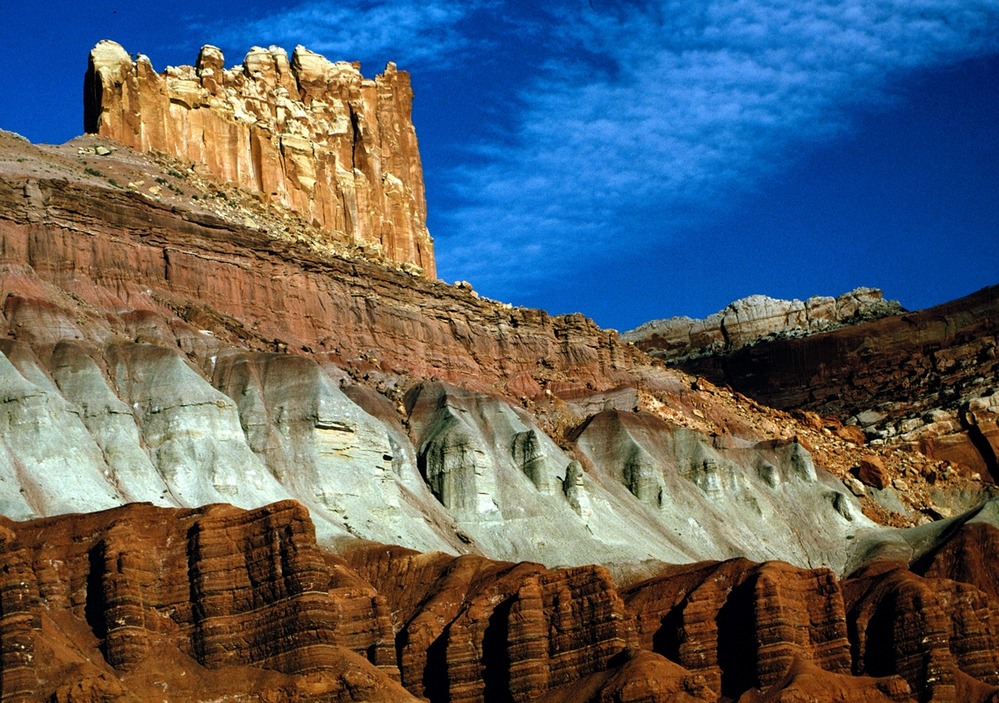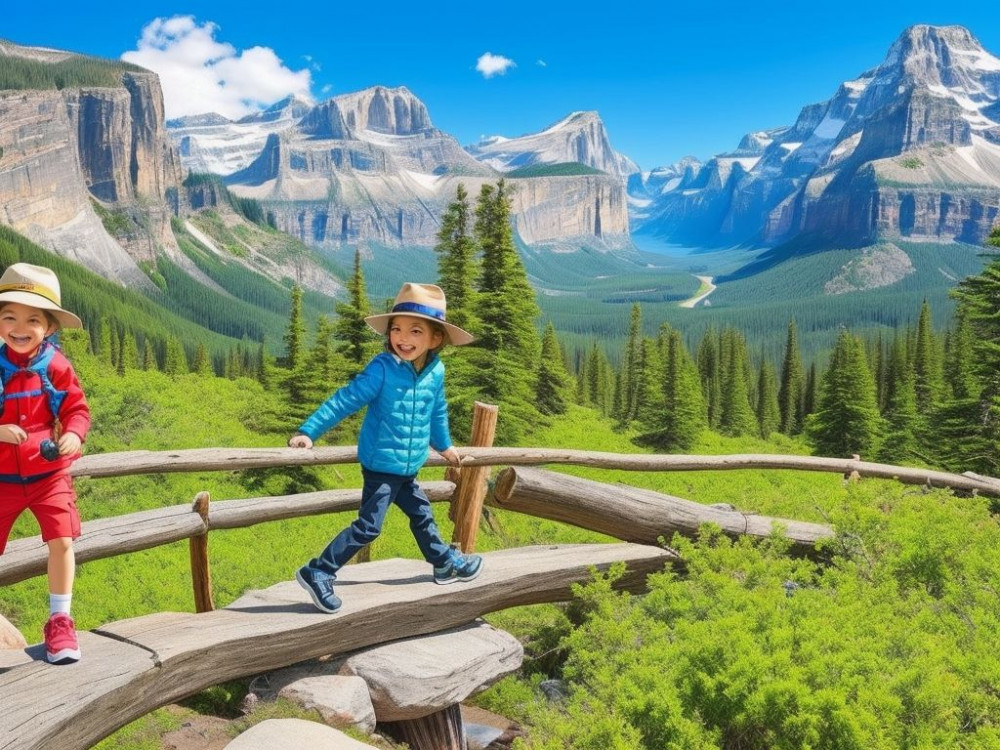Eager for a nature retreat? Capitol Reef National Park is the place to go! Incredible views await, along with life-altering memories. Take a hike and explore the unique geological formations. Capitol Reef is perfect for an escape!
Introduction
Capitol Reef National Park is a mesmerizing destination in the heart of Utah. Towering cliffs, vibrant canyons, and captivating rock formations make this natural wonderland truly extraordinary. You’ll be surrounded by breathtaking vistas and the park’s unique geological features, such as the Waterpocket Fold, tell a story of Earth’s history. It’s also rich with cultural heritage – over 2,000 archaeological sites preserve evidence of civilizations past.
To experience all Capitol Reef has to offer, take advantage of its outdoor activities. Hike through red sandstone canyons, go on scenic drives, or try your hand at rock climbing. Or, camp under the starry night sky and wake up to the soothing sounds of nature. This park is the perfect place to create memories that will last a lifetime.
Location and History
Capitol Reef National Park is located in south-central Utah. It has rugged desert lands, towering cliffs and colorful canyons. The park’s history goes back to when Native American cultures, such as the Fremont people, lived there. Also, Mormon settlers cultivated orchards which still exist today. The name “Capitol Reef” comes from these settlers who saw the white domes of sandstone formations like those around capitol buildings.
The Waterpocket Fold is a unique feature in Capitol Reef. It is a buckle in the Earth’s crust spanning almost 100 miles. Visitors can see millions of years of Earth’s history through its exposed layers of rock.
Capitol Reef National Park is ideal for adventure seekers. There are numerous trails and hidden gems to explore. Slot canyons, ancient petroglyphs and more await you. Marvel at the awe-inspiring beauty of the park. Enjoy hikes among the sandstone cliffs and breathtaking vistas. Plan your visit now and embark on a remarkable journey.
Geography
Capitol Reef National Park is a captivating paradise located in Utah. Spanning 378.85 square miles and ranging in elevation from 3,910 to 8,960 feet, this national park boasts an awe-inspiring landscape full of geological wonders.
Take a hike to uncover hidden secrets or take a scenic drive through Cathedral Valley to witness the majesty of nature. Enjoy a refreshing dip in the Fremont River or explore ancient petroglyphs left by Native Americans.
Be captivated by the splendor of Capitol Reef National Park. Step away from your daily routine and embark on an adventure that will leave you with unforgettable memories. Experience the wonders of nature while admiring towering cliffs and stunning vistas. Plan your visit today and feel the heat of this desert paradise hotter than a jalapeno wearing a down jacket!
Climate
Capitol Reef National Park‘s climate is hot and dry in summer, with temps sometimes soaring to 100°F. Winters are cold, with snow and temps below freezing. Most rain falls during spring and summer, fueling lush vegetation.
Visitors should come ready for extreme temperature changes. Wear layers and bring plenty of water and sunscreen to handle the desert conditions.
Plan activities during cooler times and explore shaded areas. Take hikes with stunning views and respite from the sun.
By following these tips, visitors can take in the natural beauty without the harsh climate getting in the way. Adapting to the weather will ensure a safe, comfortable experience.
Flora and Fauna
Nestled in Capitol Reef National Park lies an abundance of Flora and Fauna ready to be explored. Dive into the captivating world of plants and wildlife and refer to the table below for an overview.
Plant Species and Wildlife
| Plant Species | Wildlife |
|---|---|
| Pinyon Pine | Mule Deer |
| Juniper | Desert Bighorn Sheep |
| Sagebrush | Golden Eagles |
| Fremont Cottonwood | Bobcats |
| Prickly Pear Cactus | Red-tailed Hawks |
Discover even more enthralling life forms, such as wildflowers and mountain lions. During seasonal changes, birds migrate through the park, creating a dazzling sight for bird enthusiasts.
Explore the unique Flora and Fauna of Capitol Reef National Park. Witness vibrant wildflowers blooming and majestic animals navigating their habitats. Visit today and experience nature’s perfection! Capitol Reef National Park’s ecosystem is like a buffet for plants and animals – survival of the fittest has never been so delicious!
Ecosystem
Capitol Reef National Park is home to a diverse ecosystem full of life, with juniper trees, prickly pears, mountain lions and gray foxes all living in harmony. Plus, the Waterpocket Fold creates hidden alcoves and steep cliffs for other species to find refuge.
Let’s take a closer look at this unique natural system with a biodiversity table:
Species and Quantity
| Species | Quantity |
|---|---|
| Juniper Trees | 2,500 |
| Prickly Pear Cacti | 4,000 |
| Mountain Lions | 10-15 |
| Gray Foxes | 30-40 |
So, join us in the exploration of Capitol Reef National Park—walk the trails, discover the secrets of the ecosystem and witness the wonders of nature! It’s time to preserve this remarkable place before it slips away.
Conservation
Conservation is a must at Capitol Reef! Here are 3 key points to consider:
- Safeguarding Wildlife: Measures are taken to minimize disturbances to the habitats of the park’s various species and promote sustainable practices.
- Preserving Resources: Preserving natural resources like water and geological formations is essential for maintaining the park’s ecological balance and providing visitors with a real experience.
- Educating Visitors: Through tours, exhibits, and signs, visitors gain understanding of how they can help conservation goals.
Plus, Capitol Reef National Park partners with local communities and organizations to enhance conservation. Here are some tips to help:
- Encourage Responsible Tourism: Stay on designated trails and avoid activities that may harm the environment or wildlife.
- Support Local Projects: Participate in volunteer programs or donate to local organizations dedicated to preserving natural areas.
- Raise Awareness: Use social media platforms, local publications, or forums to spread the word about Capitol Reef’s unique ecosystem and invite others to join preservation efforts.
By doing this, we not only contribute but also indirectly support ongoing research, habitat restoration projects, and sustainable resource management. Let’s make sure future generations can marvel at Capitol Reef’s natural beauty!
Recreation
At Capitol Reef National Park, recreation is an exciting adventure! Hike scenic trails, explore historical sites and take in breathtaking views. There are plenty of activities for everyone: hiking, camping, scenic drives, rock climbing, picnicking, and horseback riding. Plus, discover the park’s famous Waterpocket Fold and historic orchards.
To make the most of your visit, plan ahead, pack essentials, and follow Leave No Trace principles. Attend ranger programs to learn about the park’s history and geology. With these tips, you can enjoy an unforgettable experience amidst magnificent landscapes! So get ready and embark on a wild journey!
Tourism
At Capitol Reef National Park, a captivating experience awaits. Red rocks and diverse ecosystems create a unique backdrop for exploration. Hike along scenic trails, marvel at petroglyphs, or take in views from overlooks. Discover hidden arches and slot canyons, and explore the rich history of pioneer life and orchards.
Stargazing at Capitol Reef is second to none. Minimal light pollution makes the night sky come alive with countless stars and constellations. Don’t miss your chance to experience this remarkable destination. Plan a visit and create memories that will last a lifetime. Witness sunsets, go on thrilling hikes, and immerse yourself in the natural wonders.
Prepare to be amazed! Enter the future of Capitol Reef National Park, where the rocks whisper secrets, the landscapes defy gravity, and time travel is better than the wildest roller coaster ride.
Future
Capitol Reef National Park is set for a promising future. To cope with higher visitor numbers, conservation and sustainability are key. Research is being done to understand the impact of climate change on the park’s ecosystems. Technology is helping monitor and manage resources. Plus, the park is teaming up with local communities to promote sustainable tourism. Therefore, ensuring the park is viable for future generations is a priority.
FAQ
Where is Capitol Reef National Park located?
Capitol Reef National Park is located in south-central Utah, USA.
What are the main attractions in Capitol Reef National Park?
Some of the main attractions in Capitol Reef National Park include the stunning cliffs and canyons, the Waterpocket Fold, Hickman Bridge, Capitol Dome, and the historic Fruita orchards.
Are there camping facilities available in the park?
Yes, Capitol Reef National Park offers developed campgrounds with different amenities, as well as backcountry camping options for those seeking a more rugged experience.
Can I hike in Capitol Reef National Park?
Absolutely! There are numerous hiking trails of varying difficulties in the park, catering to both casual walkers and experienced hikers. Some popular hikes include the Capitol Gorge Trail, Hickman Bridge Trail, and the Cassidy Arch Trail.
Is it possible to go horseback riding in the park?
Yes, horseback riding is allowed in designated areas of Capitol Reef National Park. Make sure to check the park’s regulations and obtain the necessary permits before embarking on a horseback riding adventure.
What is the best time to visit Capitol Reef National Park?
The best time to visit Capitol Reef National Park is during the spring and fall seasons when the temperatures are moderate, and the park showcases vibrant colors. Avoiding the peak summer months is recommended, as temperatures can be extremely hot.




Leave a Reply